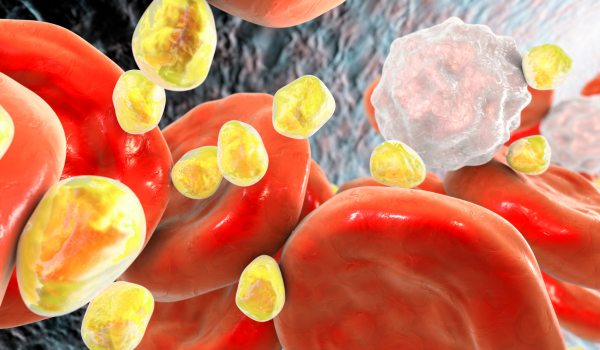Cholesterol often gets a bad reputation, but it is actually essential for health. The body needs cholesterol for vital functions such as building cells and producing hormones like estrogen and testosterone. The key is keeping cholesterol within a healthy range.
Maintaining normal cholesterol levels can help protect against heart disease and support overall well-being. Several factors affect cholesterol, but lifestyle changes can make a big difference.
What Is Cholesterol?
Cholesterol is a type of lipid, or fat-like substance, naturally produced by the liver. It plays roles in building cells, producing vitamin D, and making hormones. Most people also consume dietary cholesterol from foods such as meat, dairy, and eggs.
Because cholesterol does not dissolve in water, the body uses particles called lipoproteins—made of fat and protein—to transport it through the blood. When you get a cholesterol blood test, healthcare providers are measuring lipoproteins to estimate cholesterol levels.
HDL Cholesterol
High-density lipoprotein (HDL) is often called “good” cholesterol. It carries excess cholesterol back to the liver, where it can be removed or recycled. HDL also helps reduce plaque buildup in arteries, lowering the risk of heart disease.
LDL Cholesterol
Low-density lipoprotein (LDL) is known as “bad” cholesterol. It carries most of the cholesterol in the blood and can contribute to arterial plaque buildup. High LDL levels increase the risk of heart disease.
What Is Normal Cholesterol?
A blood test called a lipid panel measures cholesterol levels, including HDL, LDL, total cholesterol, and sometimes non-HDL cholesterol. Triglycerides, another type of fat, are also measured.
Cholesterol levels are expressed in milligrams per deciliter of blood (mg/dL). Keeping values within the recommended ranges helps lower the risk of heart disease.
normal cholesterol levels for adults (20+ years old):
-
Total cholesterol: 125–200 mg/dL
-
LDL: less than 100 mg/dL
-
Non-HDL: less than 130 mg/dL
-
HDL: 40 mg/dL or higher (men), 50 mg/dL or higher (women)
-
Triglycerides: less than 150 mg/dL
normal cholesterol levels for children and teens (under 19):
-
Total cholesterol: less than 170 mg/dL
-
LDL: less than 110 mg/dL
-
Non-HDL: less than 120 mg/dL
-
HDL: 45 mg/dL or higher
-
Triglycerides: less than 75 mg/dL (ages 0–9) and less than 90 mg/dL (ages 10–19)
Higher HDL levels are considered beneficial because they protect the heart.
What Affects Cholesterol Levels?
Some factors cannot be controlled, such as age and genetics, while others can be improved through lifestyle choices.
age and sex – Cholesterol levels often increase with age. After menopause, women may see higher LDL levels.
genetics – Family history of high cholesterol can raise risk. Some people have inherited conditions like familial hypercholesterolemia.
diet – Diets high in processed foods, sugar, and saturated fats can increase LDL and lower HDL.
body fat – Excess body fat is linked to high LDL and low HDL.
activity level – A sedentary lifestyle contributes to poor cholesterol balance, while physical activity can improve it.
smoking and alcohol – Smoking lowers HDL and raises LDL, while excessive alcohol use also disrupts cholesterol balance.
How to Maintain Normal Cholesterol Levels
follow a nutrient-rich diet
Focus on vegetables, fruits, beans, nuts, seeds, and fish. Diets such as the Mediterranean diet help lower LDL and raise HDL.
maintain healthy body weight
Losing even 5–10% of body weight can significantly reduce LDL, total cholesterol, and triglycerides.
avoid smoking
Quitting smoking improves HDL cholesterol and reduces overall health risks.
increase physical activity
Exercise lowers LDL and raises HDL. Aim for 150 minutes of moderate-intensity activity or 75 minutes of vigorous exercise each week.
take medication if needed
Some people, especially those with genetic conditions, may need cholesterol-lowering medication such as statins in addition to lifestyle changes.
How Often Should Cholesterol Be Tested?
Regular cholesterol testing is important to monitor heart health.
-
Healthy adults: every 4–6 years
-
Men: begin screening at age 35 (or earlier with risk factors)
-
Women: begin screening at age 45 (or earlier with risk factors)
-
Children: tested once between ages 9–11 and again between 17–21
Those with heart disease, diabetes, or family history of high cholesterol may need more frequent testing.
A Quick Review
The liver naturally produces cholesterol, and additional cholesterol comes from food. While cholesterol is necessary, keeping levels within a healthy range is crucial for heart health.
For adults, total cholesterol should be between 125–200 mg/dL, while for children, it should be below 170 mg/dL. A lipid panel measures HDL, LDL, and triglycerides to assess risk.
Eating a balanced diet, exercising regularly, maintaining a healthy weight, and avoiding smoking all support healthy cholesterol levels. If lifestyle changes are not enough, medication may be recommended.




